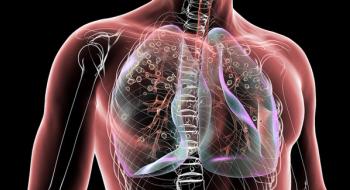
Patients With Irritable Bowel Syndrome With Diarrhea Face a Significant Financial Burden
Patients with irritable bowel syndrome with diarrhea (IBS-D) incur significantly more healthcare costs than matched controls. A new study in the Journal of Managed Care & Specialty Pharmacy found that the extra costs were associated with an increased use of medical services.
Patients with irritable bowel syndrome with diarrhea (IBS-D) incur significantly more healthcare costs than matched controls. A
The researchers sought to analyze total annual healthcare resource use and costs that were gastrointestinal- and symptom-related among IBS-D patients, as well as compare these costs with matched controls. The study included 19,653 patients with IBS-D and 19,653 matched controls.
“Due to the disruptiveness of symptoms, IBS patients seek healthcare to diagnose and manage their condition, resulting in increased healthcare resource utilization and a substantial economic burden on the healthcare system,” the authors wrote.
IBS-D accounts for approximately one-third of all IBS cases, and the authors noted that IBS subtypes differ in management, which results in differences in economic burden between IBS overall and the individual subtypes.
The study found that patients with IBS-D, compared with the matched controls, had more than triple the mean annual number of doctor visits and more than double the mean number of monthly prescription fills. Less than one-third (29.3%) of all-cause costs were attributable to gastrointestinal-related costs, and 13% were symptom-related costs.
The incremental total all-cause costs attributable to IBS-D, after adjusting for demographic characteristics and comorbidities, was $2268, with 78% being medical costs.
“The results suggest a potential opportunity for reducing healthcare resource utilization and costs associated with IBS-D with the use of effective therapies that provide adequate and sustained relief of the multiple symptoms of IBS-D,” the authors wrote.
The researchers also determined that the costs of IBS-D were comparable to total annual per-patient costs of asthma and migraine. However, asthma and migraine have greater recognition among payers, so the comparability of IBS-D’s cost burden is an important finding, they write.
Limitations of the study include the lack of an International Classification of Diseases, Ninth Revision, Clinical Modification diagnosis code for IBS-D. Plus, even though patients were matched to controls based on some characteristics, the incremental cost estimates could be affected by unmeasured variables.
“Further research should focus on the underlying factors driving increased medical resource use among patients with IBS-D and how effective treatments can potentially alleviate the excess medical costs associated with this condition,” the authors concluded.
Newsletter
Stay ahead of policy, cost, and value—subscribe to AJMC for expert insights at the intersection of clinical care and health economics.













































